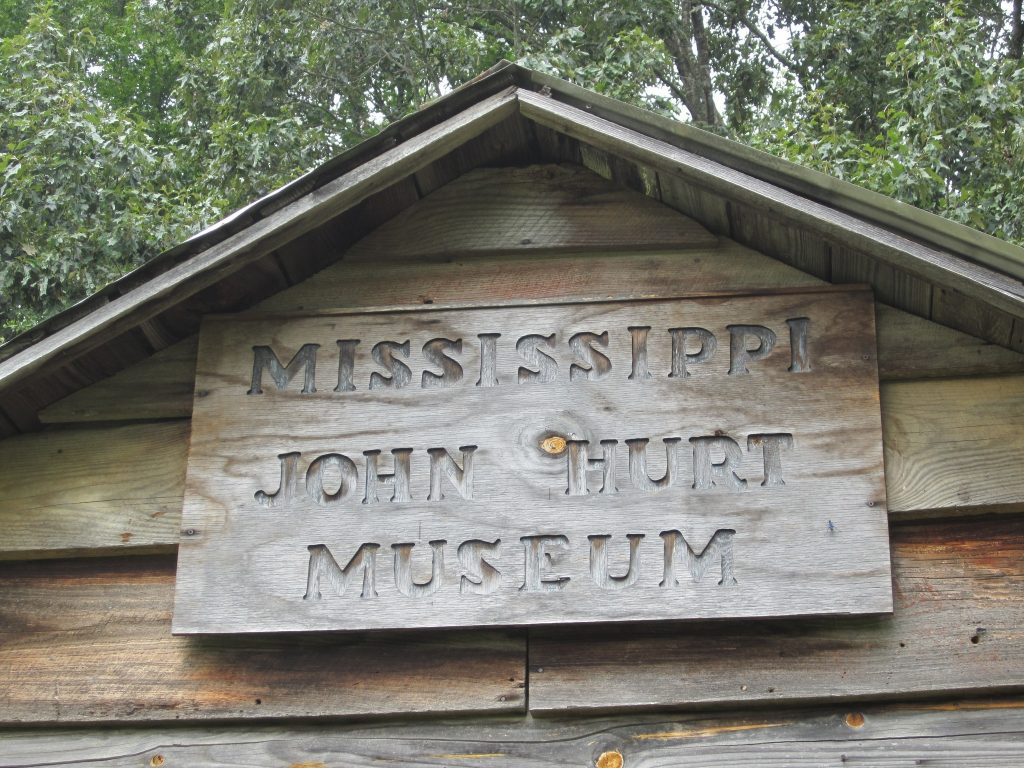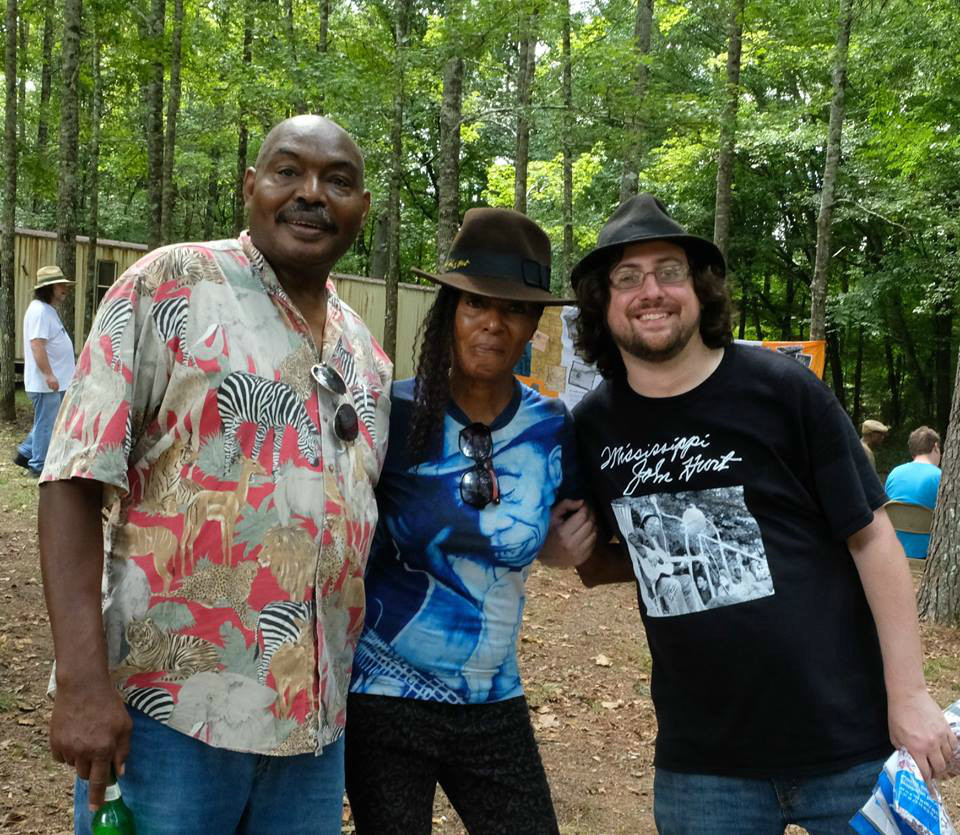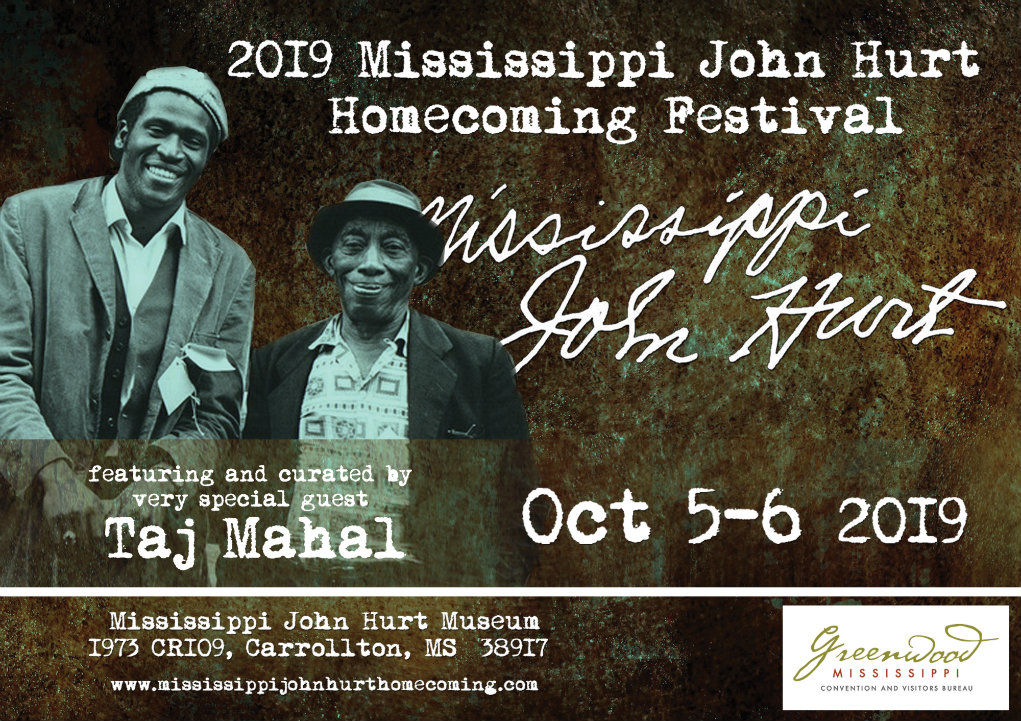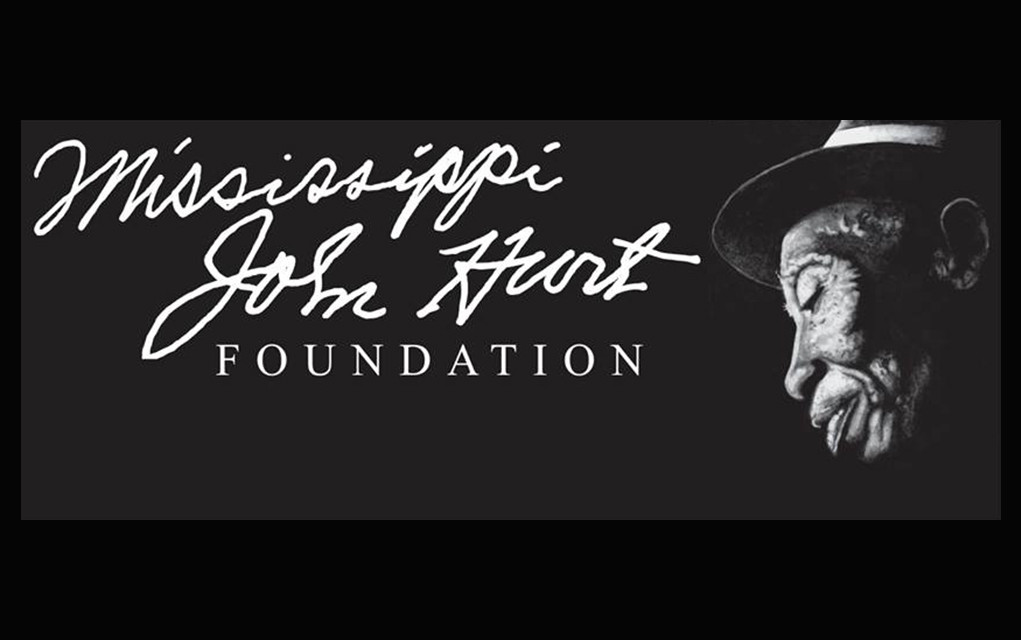Editor’s Note: We are saddened to learn that the Mississippi John Hurt Museum (his original home) was burned down early Wednesday morning “only hours after receiving landmark status.” A statement from the Mississippi John Hurt Foundation continues, “John Hurt has long been a symbol of kindness, and the museum has always been a reminder of his gentle soul. This vicious act of arson is devastating news. We will share more information about this hateful vandalism at a later time.“
You can help restore and celebrate this icon’s legacy here.
In the late ‘90s, Mary Frances Hurt took her students on a field trip to the House of Blues in downtown Chicago. It was there that she saw a portrait of her grandfather, John Hurt, or Mississippi John Hurt. On the portrait the information was incorrect, so she called them in hopes of a correction. “And from there, I always had this fetish about this house that my grandfather used to live in. It was a shotgun house. The only thing left of Avalon, where I grew up and where Daddy John lived, was the African-American church — the mecca of the community for African-Americans — and Daddy John’s house that the owner was using as a barn. In 2003, I went there to inquire about the house and find out who owned the house.”
She took an early morning train ride to the house. While there, she said aloud to herself that she wished she owned the place.
“And the man who had pulled up behind me just said, ‘Why?’ I looked at him very agitated and said, ‘I’m sorry, sir. I was talking to myself.’ He became very amused. He said, ‘No, really, what does this house mean to you?’ I said, ‘Not much really, other than my grandfather used to live here a long time ago.’ Then he said to me, ‘If you knew who owned the house, what would you do with it?’ I told him I would make it a museum. He said, ‘I own it, and it’s yours.’ It startled me. I turned around and said, ‘Do you know me?’ He said no. I asked him if he knew my grandfather and he said no. He said, ‘I used to own all this land around here, and God said this house belonged to the family. And I sold everything but this house. He told me you were going to be here this morning.’ I was weirded out because I had only told my mom I was coming. No one knew that I was coming. I asked him how much he wanted for it and he said $5,000. I immediately said ok. Of course I didn’t have $5,000. What teacher does?”
Mary recalls promptly going to the local bank to speak to the president. “I totally forgot how I was dressed. I’d just come on the train. I looked like I shouldn’t be speaking to the bank president. He gets in his big chair and leans back and says, ‘Now, what can I do for you?’ And I said, ‘Oh, I just need $5,000.’ He asked what I was going to do with $5,000. I said, ‘You see, there’s this house not too far from here on Teoc Road. It’s all filled with hay and wasps, and I want that house.’ He said, ‘You mean that old Hurt house? Did you know him? Did you know John?’ I said, ‘Yeah, he was my grandpa.’ He goes, ‘Oh, I knew John. He used to play for my momma.’ He looks at his watch and he goes, ‘It’s almost noon. I’m so sorry. I can’t do it today, but can you come back tomorrow? And I’ll have your check ready for you.’ And it’s been magic ever since.”

Mary’s grandfather was a mystical figure to her as a child. There were two things she was fixated on: you couldn’t get a rise out of him, and you couldn’t get him to take his hat off. He never got angry or upset about anything, despite living through a time of heightened segregation betwixt white and black in Mississippi. And he never once raised his voice. Still waters run deep, I always say.
“Nothing ever seemed to bother him. When he spoke — because he rarely spoke — it was like E.F. Hutton. There was something mysterious about him.” For Mary, it was incomprehensible that her grandfather wasn’t outraged by the torpid complacency of racism in Mississippi at that time. “I was so bitter and mean in a sense that I had no tolerance for it,” she admits. Mary has learned over time that “you can’t mandate people’s hearts,” but you can your own. The happiness that her festival-goers extract from the weekend of fellowship and music has brought her the same benediction. Upholding John’s legacy by creating a festival in his name has helped her to find herself along the way. The festival in and of itself seems to be an extension of her outreach efforts through the Mississippi John Hurt Foundation, which she established in 1999.
“The sole objective of the Mississippi John Hurt Foundation is to have a blues camp for impoverished children from various cultures to come during the summer to be taught not only music but values, an appreciation for themselves. I want to have a safe house for women to come and to have a community where they can express themselves. We haven’t had the funds to really get it where it needs to be, but hopefully we will get there. In 2016, I moved — the family — it was a community church where my family and thousands of other families went to church. It was my parent’s school during the week, and it was the edifice on Sunday. So, I moved that church to the property where the festival will be held. I want to use that edifice as a place for children as well as adults.”
She thinks of the Mississippi John Hurt Homecoming Festival as a musical Pangaea. We are but one race, the human race, and we all speak the universal language of music.
“I’m so eternally grateful to what Daddy John did for me as a human being. I found my own discovery just by going to the museum and meeting people from various parts of the world. I gained an appreciation for people, loving people. Music is the panacea for all of the ills of the world. It brings out the characteristics that every human being has: love, hate, disappointment, shame. As soon as music is on, you go, ‘Hey, I get it. I share that too.’”
The only name befitting this festival would be to call it a homecoming. “People come there as strangers, but they go away as friends. I see them again, and we communicate. For four or five years, people have been bringing their kids. There are kids who are dragged there by their parents that don’t want to go, and they come back now as musicians that play. I want, through this homecoming to share that — together with people that just want to celebrate life through music.”

Mary keeps her process of choosing a festival lineup pretty simple, with a soft spot for the undiscovered. This year, a certain other blues great insisted on volunteering for Mary. “Taj Mahal called me and he said, ‘Let me do the lineup for you.’ So, he’s choosing the musicians. But I told him it would take Daddy John out of it if we didn’t have an open mic night, because that’s how somebody gave him a start. Someone heard him playing. There is another John Hurt out there waiting for an opportunity. I talked to Jesse Colin Young the other day. He met Daddy John when he was 20. He will be there also with countless others.”
Sowing the seeds of musical appreciation may be the most important of the festival whys and wherefores. “It’s heartbreaking to me when I don’t see African-Americans understanding and appreciating their musical heritage. I work with the inner city by choice, and I’ve seen some pretty horrific things. To try to make kids understand and appreciate your greatness and the contribution you can make in the world by just understanding people before you. I taught for 30 years. There’s a deeper thing going on with young people that’s frightening. I truly believe it’s worse than it’s ever been. I taught 4th to 8th grade when I was in the classroom, but I also taught reading strategies to teachers for 15 years. I just retired July 1st.”
Mary’s father died before her grandfather did. She remembers vividly the day of her father’s funeral as a rather strange revelation. She was 11, but remembers as if it were yesterday. For the first time in her life, she would see her grandpa without his hat on.
“On the way to the gravesite, a narrow, winding dirt road on an incline, we were in my dad’s pickup truck. The truck got to the very peak of the hill and stopped. The funeral procession was lined up on this hill with nowhere to turn around. It was August and sweltering hot. My brother was a mechanic and got out to try and fix the car, and he couldn’t. He turned to my grandfather and he said that the car was flooded or something. He said, ‘Daddy John, we’re gonna have to get some men up here. We’re going to have to carry the coffin to the gravesite. The limousine isn’t gonna be able to get past us.’ Daddy John said no. The six of us were chattering, and he told us to be quiet. He took off his hat. He held it to his chest in a very honorable way. He looked up to the sky and he started talking to my dad. He said, ‘I know it’s you, and I need you to let me take you up here now. I got your kids here on the back of the truck and we want to say a proper goodbye. I’m gonna come back home. I’m gonna help Ann with the children, and it’s going to be okay.’ He kept looking up to the sky, and suddenly this big, wide smile came to his face. He put his hat back on, tipped it to the sky, and he said, ‘Much obliged.’ And he said to my brother-in-law, ‘Hit it.’ That truck started right up, and it never stopped again.”
John was known and loved for his music, but Mary urges that there was a larger-than-life, humanistic side of him that people didn’t know. “He really had a deep love for people. He always wanted to give, and he was the most selfless person that I’ve ever met in my whole life. I remember when my grandfather was leaving to go on tour with Tom Hoskins, and my daddy was begging him not to go. I don’t know whether my father knew how ill he was. Daddy John said to him in a voice that was so foreign to him, ‘I got to go.’”
I asked if she was referring to the fabled Newport Folk Festival, where he would make his first major concert appearance and where he would become an icon of the ‘60s folk-blues revival. “You know what, he had to. Because I wouldn’t be the Mary I am today. Had he not gone, his legacy would have been buried with him on that hill never to be spoken of again. I feel like he did it for me, and I’m grateful for that. I want the festival to exemplify the person he truly was. He truly loved people.”
The Mississippi John Hurt Homecoming Festival is held Saturday & Sunday, October 5 & 6, 2019 at 1973 County Rd. 109 Carrollton, MS 38917. Participate in an open mic session, enjoy a tour of John Hurt’s shotgun shack adorned with career memorabilia, and see the lineup that Taj Mahal has curated. And last but not least, Mary will literally be there with open arms to welcome you.



